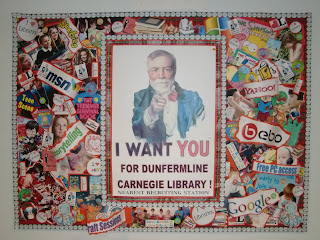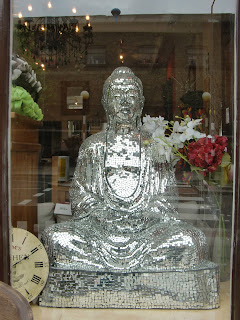For our last class we went on a behind the scenes tour of the British Library Centre for Conservation. After placing our belongings minus notepads and pencils in the lockers, we met our guide inside the entrance to the library. We walked up a flight of stairs and across the restaurant patio to the conservation studios. The conservation studios are on the top floor of a three-story state of the art addition to the St. Pancras building and was completed in 2007.
During our tour we were shown by a conservator how she was approaching the preservation of palm leaves that were a Hare Krishna text from the mid 14th century. All in all there were two hundred and fifty-three leaves, and she attempts to process five per day. Not all of them were damaged, but some that were required a lot of work. For the ones missing larger parts of the leaves, she would repair them by using a pulp and leaf-caster machine. Whereas for the leaves with small holes in them or minor damage, she would meticulously patch the holes by hand using small fragments of pulp.
On the next part of the tour we went into another studio and were shown by our guide, Mark, how leather binding is prepared in order to put gold leaf lettering on the spine. First he polished the surface of the leather with a hot iron and created a smooth surface. Next he applied glair, a glaze made of egg whites, to the leather while explaining the importance of room temperature for this process. Then he placed gold leaf on the glair followed by the application of the heated metal letters. Mark explained that there is a chemical reaction between the glair and gold leaf and that essentially the heat cooks the images of the letters into the leather. It was all very interesting and I don’t think that I’ll ever look at gold lettering on books the same way again!
At the end of our tour we were led into the Foyle Visitor and Learning Centre, an interactive display area showing the methods of book and sound conservatorship. Our guide gave us booklets pertaining to preservation such as Basic Preservation, Bookbindings, Damaged books, and Photographic material. I hope to make use of these materials someday.



















